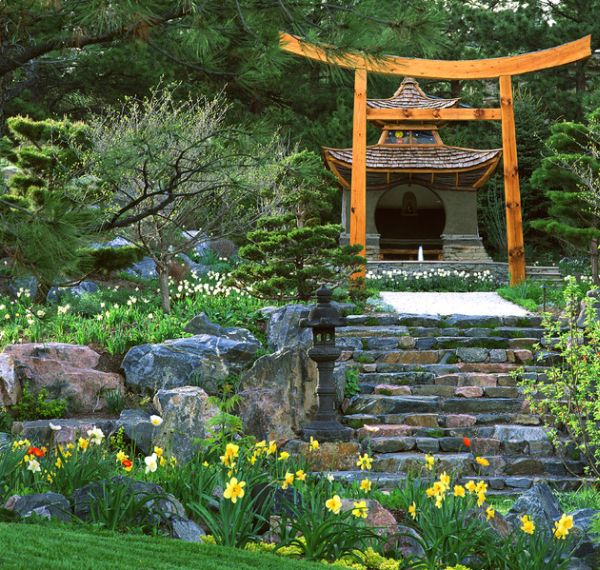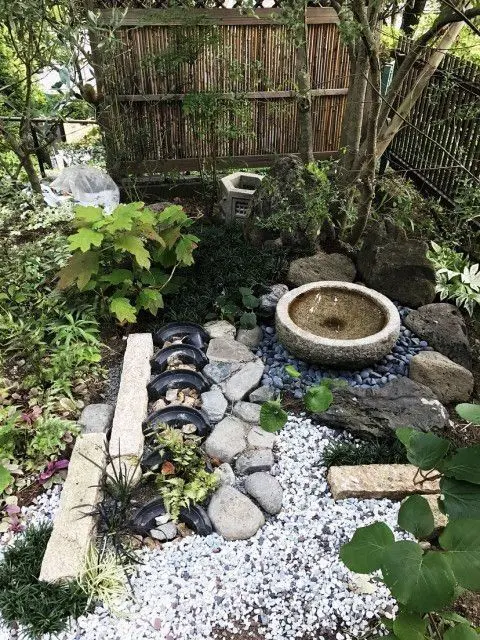When we think of Japan, what often comes to mind is harmonious landscapes, tranquil gardens, and minimalist aesthetics. Japanese outdoor decor is not just about decor; it embodies a philosophy of living harmoniously with nature. Having experimented with Japanese outdoor elements in my backyard, I can assure you that the results are not only visually appealing but also soothing to the soul. In this article, we will explore the key elements of Japanese outdoor decor, design tips, and how you can create your own oasis of tranquility.
Understanding Japanese Outdoor Decor
Japanese outdoor decor reflects the country’s rich cultural heritage and its deep-rooted connection with nature. It emphasizes simplicity, natural materials, and a sense of balance. Let’s dive deeper into what characterizes this unique style.
Key Principles of Japanese Outdoor Design
- Natural Materials: Use of wood, stone, bamboo, and water features.
- Simplicity: Less is more; focus on minimalism.
- Balance and Harmony: Creating a sense of balance between elements.
- Asymmetry: Embracing natural asymmetry rather than rigid symmetry.
- Connection to Nature: Fostering a relationship between the indoor and outdoor space.

Essential Elements of Japanese Outdoor Decor
Incorporating key elements can help you capture the essence of Japanese outdoor design. Below are the primary components to consider:

1. Zen Gardens
Zen gardens are perhaps the most iconic symbol of Japanese outdoor decor. As I embarked on my own garden journey, creating a small Zen garden became a meditative and rewarding experience.

How to Create a Zen Garden
- Choose a suitable location that receives plenty of sunlight.
- Use sand or fine gravel to create a base; rake it to mimic water ripples.
- Add rocks and stones, carefully selecting their shape and arrangement.
- Incorporate plants such as moss, small evergreens, or flowering shrubs.

2. Water Features
Water is a crucial element in Japanese design, symbolizing purity and tranquility. Adding a small pond, fountain, or even a simple birdbath can transform your outdoor space.

Types of Water Features
| Type | Description | Pros | Cons |
|---|---|---|---|
| Pond | A small body of water that can host fish and plants. | Enhances biodiversity, creates a natural habitat. | Requires maintenance, can attract pests. |
| Fountain | A decorative feature with flowing water. | Creates a calming noise, visually striking. | Can consume power, regular cleaning needed. |
| Birdbath | A shallow basin for birds to drink and bathe in. | Attracts wildlife, easy to maintain. | Limited visual impact, needs to be refilled. |

3. Stone Pathways
Stone pathways are another hallmark of Japanese gardens. They guide visitors through the space and enhance the natural aesthetic.
Creating Stone Pathways
- Map out the path you envision.
- Select stones that complement your garden’s color palette.
- Ensure proper spacing for a balanced look.
- Surround stones with moss or ground cover for a natural touch.
4. Lanterns and Lighting
Japanese lanterns add charm and elegance to outdoor spaces, especially at night. They can illuminate pathways and draw attention to specific garden areas.
Types of Japanese Lanterns
- Stone Lanterns: Made from granite or other stones, these are durable and timeless.
- Wooden Lanterns: More traditional, these lanterns create a warm ambiance.
- Modern LED Lanterns: Energy-efficient options that mimic traditional designs.
5. Plant Selection
Choosing the right plants is vital for a Japanese garden. Often, the focus is on shrubs, trees, and flowers that are native or traditional to Japan.
Popular Japanese Plants
| Plant | Characteristics | Care Level |
|---|---|---|
| Bonsai Tree | Small, carefully pruned trees. | High |
| Japanese Maple | Stunning foliage with vibrant colors. | Medium |
| Cherry Blossom | Beautiful seasonal flowers. | Medium |
Design Tips for Creating a Japanese Outdoor Space
Now that we’ve covered essential elements, let’s explore some design tips that can help you integrate Japanese aesthetics into your outdoor space effectively.
1. Embrace Minimalism
Less is definitely more in Japanese design. Think about reducing clutter and focusing on a few key elements that carry significance.
2. Use Natural Colors
Choose colors that reflect nature—earthy browns, greens, and soft blues work perfectly.
3. Create Zones
Designating areas for rest, contemplation, and interaction can create an engaging outdoor experience.
4. Incorporate Authentic Materials
Whenever possible, use natural materials such as wood, stone, and bamboo to achieve an authentic look.
A Step-by-Step Guide to Designing Your Japanese Outdoor Decor
Based on my personal journey and research, here’s a detailed step-by-step guide to create your Japanese outdoor oasis:
Step 1: Planning Your Space
Begin by evaluating your outdoor area and planning how you want to create different zones.
Step 2: Choosing the Right Elements
Select key features like a Zen garden, water features, and lanterns that resonate with you.
Step 3: Layout and Design
Sketch a layout, ensuring a balance between elements and open spaces for a feeling of tranquility.
Step 4: Planting
Choose plants that complement your vision and climate, ensuring they are easy to maintain.
Step 5: Adding Decor
Install lanterns and other decor elements to accentuate your design. Focus on lighting to create a calming atmosphere at night.
Maintaining Your Japanese Outdoor Space
Once your outdoor decor is complete, maintenance is key to preserving its beauty. Here are some tips:
- Regular Pruning: Keep plants trimmed and healthy.
- Cleaning Water Features: Ensure ponds and fountains are clean to prevent algae buildup.
- Seasonal Upkeep: Prepare your garden for winter by protecting delicate plants.
Pros and Cons of Japanese Outdoor Decor
Every design style comes with its benefits and challenges. Here is a quick overview:
| Pros | Cons |
|---|---|
| Enhances calming ambiance. | Can be labor-intensive to maintain. |
| Promotes a connection with nature. | Some elements may require specific skills to install. |
| Unique aesthetic appeal. | Cost of materials can be high depending on choice. |
FAQs About Japanese Outdoor Decor
What is the significance of Zen gardens in Japanese culture?
Zen gardens serve as a space for meditation and reflection, allowing individuals to connect with nature and find inner peace.
How can I incorporate Japanese outdoor decor in small spaces?
Focus on vertical gardens, small water features, and potted bonsais to maximize your space while incorporating key elements of Japanese design.
Are there specific plants that are easy to care for in a Japanese garden?
Yes, plants like Japanese ornamental grass, azaleas, and camellias are hardy and require less maintenance, making them ideal choices.
What materials are recommended for creating Japanese outdoor decor?
Natural materials such as bamboo, stone, and wood are highly recommended to maintain authenticity in design.
Can Japanese outdoor decor work in any climate?
While some elements can be adapted, it’s important to choose plants and materials that are suited for your local climate conditions.
Conclusion
Japanese outdoor decor offers a captivating way to connect with nature while creating a serene environment. By incorporating essential elements like Zen gardens, water features, and natural materials, you can create an oasis that encourages relaxation and reflection. Remember that this style embraces the philosophy of simplicity and balance, inviting you to revitalize not just your space but also your spirit.
So, whether you’re completely redoing your garden or just incorporating a few elements, embrace the journey and enjoy the peaceful haven you’ll create!